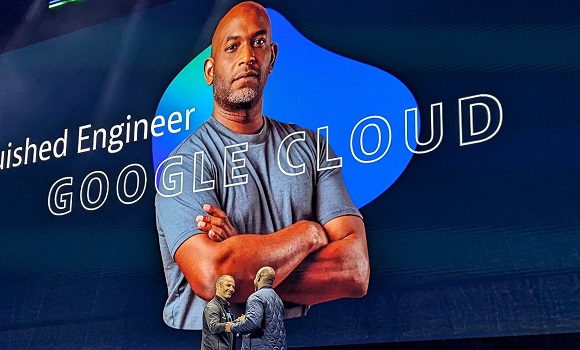Dynatrace Perform: A session with developer advocate Kelsey Hightower
Dynatrace ended its Perform 2023 conference this week in Las Vegas with a set of additional keynotes designed to leave attendees with some additional thoughts on how the company’s technology is implemented in real world scenarios.
The actual presentations were titled as followed: Redefining the boundaries of people, process and platforms, diving deep into K8s and DevOps with Google employee and developer advocate Kelsey Hightower – and, straight after, A day without boundaries with Dynatrace CTO and founder Bernd Greifeneder.
Taking the stage to discuss the world with Dynatrace developer and BizDevSecOps advocate Andi (Andreas) Grabner, Hightower mused over the development of AI (let’s think about ChatGPT) and said that as advanced as computers are today, AI is still at a point (and may always be) where it lacks human emotion.
“People have been looking out for wild animals for thousands of years, people have been doing observability forever,” said Hightower. “But we do have Kubernetes specialists today who can almost sense when a server goes down with that same time of human instinct. What I can see happening at Dynatrace is an ability to automate that intelligence.”
Talking about Kubernetes, Grabner and Hightower discussed the state of auxiliary workloads that are cropping up in modern use cases. This only happens when Kubernetes is made easy to deploy… so what boundaries do we need to break down and go further.
“I think one of the best ways to remove boundaries is to create new ones. If you play an open world video game, you can start off and do whatever you want and the curious mind doesn’t even think about what’s ahead – the character eventually hits a barrier and the player then has to turn back and turn to the task that the game has set,” said Hightower.
His reference here eludes to the way organisations are now working to apply Kubernetes in the workplace. If you tell every developer in an organisation that they have to learn every granular element of a system deployment before they can start… then that in a sense is setting up more barriers.
Stack Overflow starter syndrome
As we now think about creating autonomy for applications, what should we think about next?
Hightower talked about the concept of DevOps and the time pressure that developers face every day. We know that software developers would typically go to Stack Overflow at the start of a project and – if they find some code that works – move forwards and make sure that the QA team feels happy with the application thus far.
“This process means having to reverse engineer a section of code that we fundamentally don’t understand. We need to find a better way of working and get to better frameworks,” said Hightower. “Developers need to be able ‘serialise’ their knowledge into the platform they use – this is not just about shifting left, this is about being able to place infrastructure in place so that it can be used by others who don’t have to think about processes like putting binaries on a server before they can even start work.”
Grabner and Hightower concluded with some thoughts on what the future of cloud computing looks like.
For Hightower, the big cloud is all about the ‘control’ factor.
If cloud engineers have an outage that they can’t do anything about, then this (obviously) is a loss of control. But let’s remember says Hightower, not everybody knows how to fly a 747 and be able to ‘operationalise’ a plane, or indeed a cloud. What he is perhaps suggesting is that you don’t to always know how to engineer a platform in order to use it.
Not if it’s a good one, right?




